- Kenmore refrigerator water filters
- Whirlpool refrigerator water filters
- Samsung refrigerator water filters
- GE refrigerator water filters
- LG refrigerator water filters
- Frigidaire refrigerator water filters
- KitchenAid refrigerator water filters
- Maytag refrigerator water filters
- Kenmore Elite refrigerator water filters
- Estate refrigerator water filters
- GE Profile refrigerator water filters
- Amana refrigerator water filters
- Bosch refrigerator water filters
- Dacor refrigerator water filters
- Electrolux refrigerator water filters
How to install a pressure washer chemical injection kit
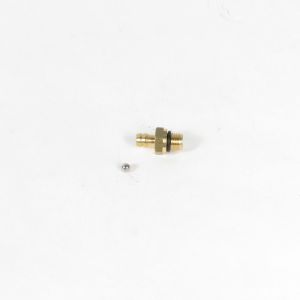
This DIY repair guide explains how to replace a pressure washer chemical injection valve. The chemical injection valve draws detergent into the pump when you use a low-pressure nozzle for cleaning. A worn or damaged chemical injection valve won’t pull detergent into the water stream. If the pressure washer isn't spraying soapy water when it should, first make sure you’re using a low-pressure nozzle and the siphon hose isn’t clogged. If so, replace the damaged chemical injection valve with the manufacturer-approved replacement kit. The chemical injection kit includes the O-ring and all parts needed for the repair.
Follow the steps in this repair guide to install the chemical injection kit in common Craftsman, Generac, Briggs & Stratton, Husqvarna and Troybilt pressure washers.
Quick links
Instructions
Tools required
Metric wrench set
Silicone lubricant
Torque wrench (optional)
Work gloves
Repair difficulty
Time required
15 minutes or less
Repair difficulty
Time required
15 minutes or less
Instructions
- 01.
Disconnect the spark plug
Disconnect the spark plug wire from the spark plug.
- 02.
Remove the chemical injection valve
If detergent is in the detergent reservoir, clamp the chemical injection hose near the chemical injection valve.
Use an open-end wrench to turn the chemical injection valve counter-clockwise and remove it.
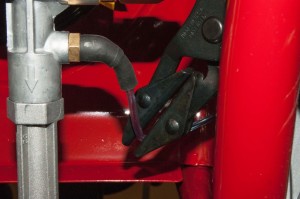
PHOTO: Clamp off the chemical injection hose.
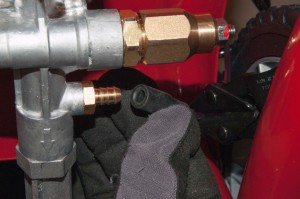
PHOTO: Pull the chemical injection hose off of the valve.

PHOTO: Remove the chemical injection valve.
- 03.
Install the new chemical injection valve
Install the O-ring from the kit on the new chemical injection valve.
Lubricate the O-ring with silicone lubricant. Thread the new chemical injection valve into the pump and tighten. Reconnect the chemical injection hose.
Release the clamp from the chemical injection hose, if used.
Tip: If you have a torque wrench, tighten the new chemical injection valve to 10-12 ft.-lbs. or torque.
PHOTO: Install the new chemical injection valve.
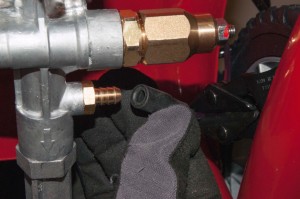
PHOTO: Reconnect the chemical injection hose.
- 04.
Reconnect the spark plug
Reconnect the spark plug wire to the engine.
- 05.
Check pressure washer operation
Start the pressure washer and check for leaks. Check for proper detergent draw through the new chemical injection valve.
Warning: Undertaking repairs to appliances can be hazardous. Use the proper tools and safety equipment noted in the guide and follow all instructions. Do not proceed until you are confident that you understand all of the steps and are capable of completing the repair. Some repairs should only be performed by a qualified technician.
Symptoms for gas pressure washers
Choose a symptom to see related pressure washer repairs.
Main causes: pump running for more than 5 minutes when the spray wand isn't being used, faulty pressure relief valve, ba…
Main causes: faulty unloader valve, bad pressure regulator…
Things to do: tune up the engine, inject pump saver into the water pump when storing the pressure washer for the winter…
Main causes: dirty air filter, stale fuel, clogged or dirty carburetor, bad unloader valve…
Main causes: stale fuel, gummed up carburetor, engine needs tune up, throttle and choke controls need adjustment, bad re…
Main causes: broken recoil spring, damaged recoil starter…
Main causes: using a high-pressure spray tip when applying detergent, clogged siphon tube, chemical injection system fai…
Main causes: overfilling engine with oil, improper fuel/air mixture, choke system problems, dirty carburetor, engine nee…
Main causes: insufficient water supply, clogged water inlet screen, clogged pressure hose, faulty pump check valves, stu…
Repair guides for gas pressure washers
These step-by-step repair guides will help you safely fix what’s broken on your pressure washer.
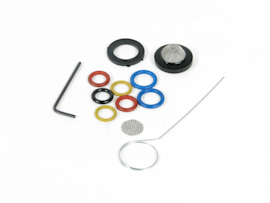
How to install a pressure washer O-ring kit
O-rings seal fittings on the pressure washer pump. Damaged seals allow water to leak from the pump. Follow these steps t…
Repair difficulty
Time required
45 minutes or less
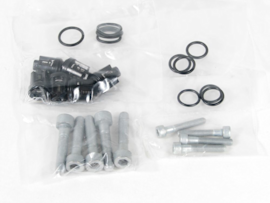
How to install a pressure washer check valve kit
Air in the inlet water supply can damage the check valves. If the pump won’t build up pressure due to damaged check valv…
Repair difficulty
Time required
120 minutes or less
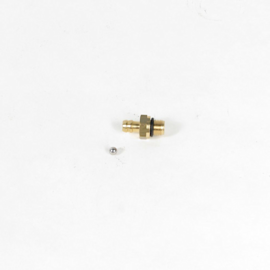
How to install a pressure washer chemical injection kit
The chemical injection valve draws detergent into the pump. If it’s not drawing detergent, use a repair kit to replace t…
Repair difficulty
Time required
15 minutes or less
Effective articles & videos to help repair your pressure washers
Use the advice and tips in these articles and videos to get the most out of your pressure washer.

Learn about all the convenient features on our Sears PartsDirect website that make your parts purchases easier.…

Learn about a new feature added to the Search Bar on Sears PartsDirect…

Get answers to frequently asked questions about Sears and Sears PartsDirect.…